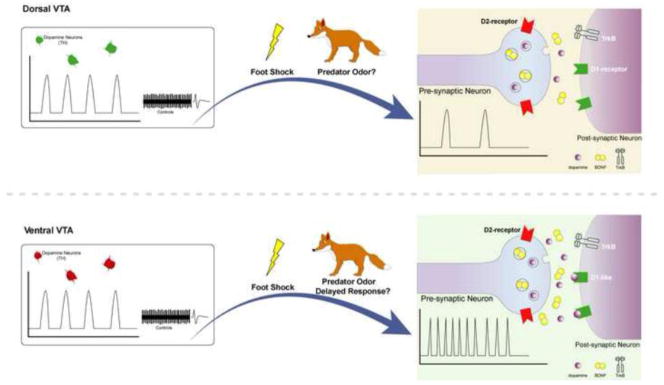Figure 1.
Responses of ventral tegmental area dopamine neurons to aversive stimuli. Electrophysiological studies show that there is variability in the responses of VTA dopamine neurons. Work by Brischoux et al. showed that more ventral VTA neurons responded to footshocks with increased activity whereas more dorsal VTA neurons were inhibited by footshock. These changes in activity would be expected to correspond to changes in dopamine (and possibly BDNF) release in axon terminals, although this has not yet been measured directly. The effects of predator odors (which induce delayed dopamine release) on VTA neurons has not been examined.

